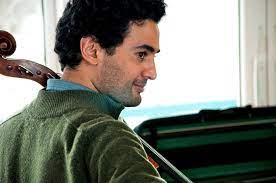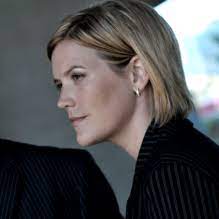
by Kevin T McEneaney
In this era of pandemic when young lovers face unscalable obstacles that leave them huddled on over a computer on Zoom or speaking by telephone, Romantic music appears to speak with more authority. On May 8, Raman Ramakrishnan and Erika Switzer performed two Brahms Sonatas at Bard College via YouTube.
Sonata in E minor for Cello and Piano, Op. 38 (1862-5) offers an early masterpiece by Brahms. Opening with fragile emotional tenderness, this work eventually becomes a homage to J.S. Bach. Raman’s performance was more deeply poignant than the noted Anner Bylsma recording of 1995 (Vivarte) or the more bland and popular Yo-Yo Ma recording of 1992 (Sony).
The arc of the Brahms Sonata resembles a Romantic red rose placed in a Classical Bach crystal vase. In the opening Allegro the cello is dominant with its poignant overture of love. In the Allegretto there is amiable conversation between the cello and piano amid a quasi-Minuet in public social environment. The concluding Allegro, a fugue, features predominately the piano with Erika Switzer leading the cello. Here the cello is hard-pressed to compete in volume and emotion with the run-away piano dominating the middle and upper registers, yet Raman manages to achieve the height that others fail to achieve in this difficult passage.
The conclusion proposes a marriage of Romantic and Classical styles: beginning with Romantic overture and Classical conclusion. In a peculiar way, this presents an affirmation of Romanticism within the Classical tradition. The trajectory of the work moves backward in time in its defense of Romanticism, an apology that would surely appeal to the audience of either persuasion with the perfection of its Bach-like conclusion. In stylistic reversal from the opening, Switzer provided the electric, immediate energy of a Romantic, while Raman’s cello proposed sheer classicism bleeding and pleading to a marriage of styles while Switzer’s piano (in theory) appeared in principle to have no objection.

Sonata in F major for Cello and Piano, Op. 99 (1886) opens with an Allegro where the female piano leads with tempestuous middle register. Here the burden of the cello is to prove that the loving cello is the equal of the piano where Switzer near-heedlessly romped in volume, range, and emotional resonance. From the outset Raman proved equal to the task. The Adagio offers the hope of a longed-for compromise, difficult as that proposal appears to be. The yearning to meld the two instruments is both agony and pleasure. While the piano leads with exuberance, the cello competes with dignified disappointment ending with a swoon so poignant that one wants to tumble from one’s seat.
The concluding Allegro sustains a Romantic imagination that defies reality, Romanticism being the exultation of frustrated love which is not consummated. Romanticism yearns for the world of emotional fulfillment which does not actualize in life. Romantics were rebels because they yearned for the world of actualized love which conservative moralists judged immoral.
Both Raman and Erika captured the deep subtext of these remarkable Sonatas: the story of Brahms’ unrequited infatuation for Clara Schumann in a performance which was more than notes on a page. The extremely small audience in László Z. Bitó Auditorium was ecstatic with applause; I wish that I was there in person to applaud and not stuck behind the screen of a computer.
This profound and passionate recording can be heard for free at your convenience on YouTube at: https://www.youtube.com/watch?v=7Zpk-5iA0zU